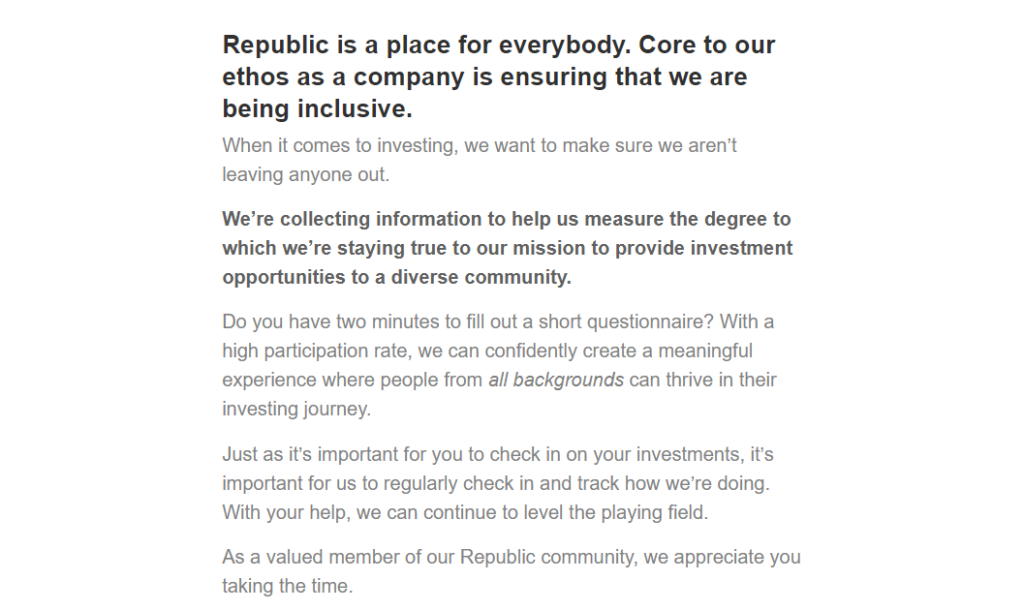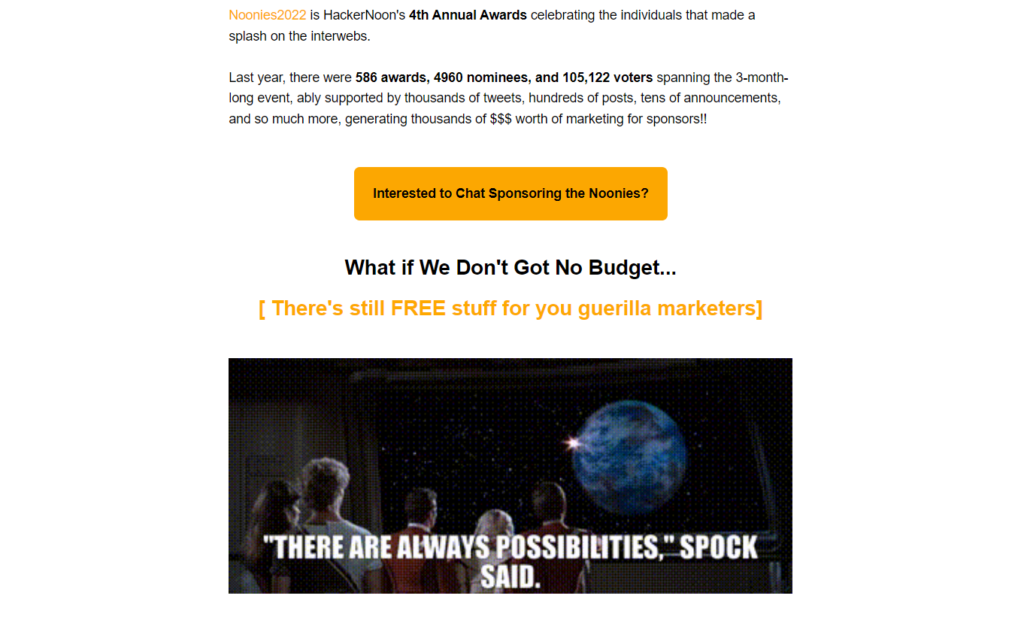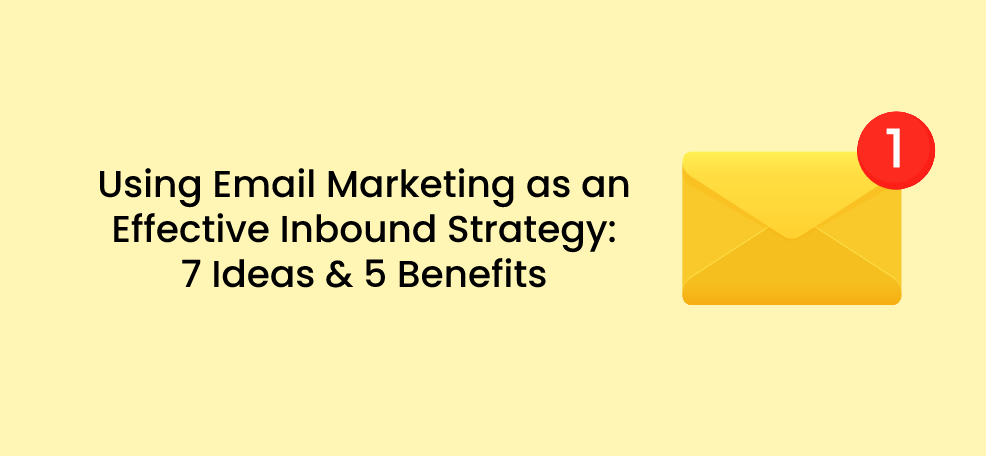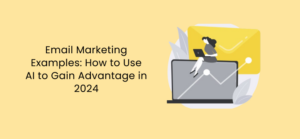I once dismissed a service after seeing its price. Then I started searching for alternatives. Two hours later, I was subscribing to the same service after they sent me an email offering a 50% discount.
That’s the power of effective email marketing. Email remains one of the most powerful tools for reaching prospects and converting them into loyal customers.
This article covers seven inbound email marketing ideas and five reasons why you should implement them.
What is Inbound Email Marketing?
Inbound email marketing is a marketing strategy tailored to prospective clients who have shown interest in a brand. These leads may have subscribed to your email list, newsletters, or content roundups.
It’s a particularly effective strategy given you know how to reach your prospects and use the language they understand.
According to a Litmus report, email marketing generates about $36 for every dollar spent.
Also, consider that 4 billion people use email daily, which is expected to reach 4.6 billion by 2025.
Tapping into this demographic, you’ll have prospects who will likely open and read your emails.
But it’s worth noting that inbound marketing is critical to an entire marketing funnel. For example, you can use lead magnets to compel prospects to sign up for your email list, then use inbound email marketing strategies to close them as customers.
7 Ideas on How to Use Inbound Email Marketing Effectively
Inbound marketing can yield welcome outcomes in increased brand popularity and profit if used appropriately. Applying each of the seven ideas presented subsequently will lead to such outcomes.
1. Be Deliberate About Your Audience
Inbound email marketing is only effective when the receiving audience fits the business prospects. This means that you cannot use just any email list.
Using inbound marketing with an emailing list that contains every customer demographic (the young and old, educated and illiterate, radical and conservative, etc.) will not produce any worthwhile results. Thus, you must pick the right audience for the email.
2. Add Value
Value addition is the main objective of every meaningful marketing strategy. The best clients/customers are those that are informed about the offerings of an industry.
These customers generally serve as marketing extensions of businesses because they tend to be deliberate about products and services. As such, they can easily (insistently and convincingly) convert their relatives and friends to brands they patronize.
The only way you can get these customers is to show them the value of what you are selling.
This is why focusing on value addition rather than radical marketing strategies like Black Fridays is important.
3. Create Engaging Content
The core element of effective inbound email marketing is engaging content. When the email’s subject matter is relevant, informative, and can improve the lives of prospective business clients, there is bound to be high customer conversion.
So, make sure to use the right blend of old and new information to engage customers. Using too many esoteric narratives can make your content too complex and turn off even the most attentive customers. Similarly, using too many common anecdotes can bore them.
You must also pay attention to composition, structure, and the mediums you use to communicate your points. Use statistics and infographics to help customers make decisions speedily and with fewer doubts. Also, you can include videos, read-along audio options, and even a live chat. Thus, even customers who are too lazy or tired to read can still get the idea behind your email.
Your inbound email marketing will also be more effective when you use search engine optimization (SEO). This way, you can respond to existing needs instead of imagined ones.
4. Build Emails Around Current and Future Objectives

One of the ways you can make your inbound email marketing strategy very effective is by balancing currently available offers with the prospects of the business.
By this, we mean that you should not advertise low-price offers for your products and services simply because you want to reach more customers.
Instead, make sure to keep in mind the objectives of your business and align these objectives with every promo that you market and use to generate customer leads.
You can amplify the effects of this idea by going into great detail about your business objectives and operations.
Let your emails reveal, for example, that you want to increase the use of employee tracking software in business-to-business (B2B) marketing, and so you are offering a 50% cut on the purchase of this software. You show integrity this way and build a firm bridge of trust with prospective customers.
5. Don’t Be Haphazard with Timing

Email marketing, as a rule, is more effective when time is taken into serious consideration. So, when you apply inbound marketing, make use of reasonable intervals. Weekly emailing, for example, is practical as it neither presents you to prospective customers as desperate nor unserious.
Instead, regular emailing lets customers perceive that you are organized and deliberate, which are characteristics that accompany trustworthiness. So, make sure to use timing to your advantage: the more regular, the better.
Also, emails should be one of the tasks you automate as a marketer. You can configure your system to send emails with offers right after a lead bounces off your payment page.
So, if price drives them away, you still get to secure them using discounts, especially if you’re running a promo.
6. Use CTA (Call-To-Action) at the End of Emails

Despite the ideas we have highlighted as helpful in improving the effectiveness of inbound marketing, it will all be for nothing if you don’t use CTA at the end of every mail.
Once again, the aim of inbound marketing emails is to direct people to your brand, so make sure to include links that redirect these prospective customers to your website.
You don’t have to be overly direct about attracting customers to your website via your CTA. You can use the customary “for more information, check us out at…” line to get customers to visit your website. Or you can embed a link in the offer. For example, the CTA button could read, “Get a 70% discount.”
Of course, these methods work to the extent that your content is engaging and informative. Anything less and your CTA will be ignored. And make sure that CTAs redirect customers to useful web pages where they get information related to the email offers.
7. Measure Feedback and Use Information for Future Decision-Making
Lastly, measure the feedback from your inbound emailing marketing strategy. Good businesses keep records and can track every resource and expense.
Similarly, when you track every email and take note of responses (or the lack of responses) from prospective customers, you can build better customer profiles and buyer personas. These profiles and personas will enable you better fine-tune your inbound emails for better feedback.
Thus, the information you get from feedback can serve as springboards for future decision-making, ultimately making your inbound marketing strategy more efficient and effective.
5 Reasons You Should Use Inbound Email Marketing
1. It Saves You Time and Effort
Inbound email marketing saves you time and effort with a target audience. Because the strategy tracks only the most suitable audiences, you get more positive feedback (in the form of high customer conversion rates) compared to general-purpose marketing strategies.

In other words, you don’t have to spend as much as you ordinarily would when you use lead magnets to attract new customers.
2. It is Very Effective for Boosting Brand Awareness
One of how inbound email marketing is different from outbound email marketing is that the focus is on the brand rather than just the products and services on the offering tray.
Prospective customers are consequently allowed to see beyond the products and services shelves into the WHYs and HOWs of businesses and their operations.
This invariably accelerates the time it takes for the average customer to trust a business seeing as the customer now knows what drives the business.
3. It is Useful for Building Long-Term Relationships with Clients
Since inbound email marketing helps customers trust businesses, it becomes very easy to build long-term relationships with these customers.
The useful information contained inside inbound business emails gradually nurtures new leads and prospects, engaging old and new customers and motivating general customer satisfaction and loyalty.
4. If Used Well, It Can Generate More Direct Profit Than Other Marketing Channels
Even though inbound emails are not general-purpose emails, they can still be very effective for getting new leads.
According to Statista, 2019 saw an increase in active email users around the globe from 3.7 billion to approximately 3.9 billion.
This number is expected to increase in 2023 to around 4.3 billion, bringing an additional 400 million new email users online in 4 short years. Imagine the fraction of this population that needs your products and services.
So, if used well, inbound email marketing can generate monetary profit. This is particularly true when emails target specific customers, as in our earlier example of Mobili-Tea, a treatment and exercise regimen for the elderly.
5. Lower Content Regulation

Unlike social media platforms, emails are not intensively regulated marketing channels. As a result, the contents of inbound emails can be more flexible, less stiff and formal, and deliberately (and professionally) playing to the casual sides of customers.
In other words, the lower content regulation means you can reveal more about your products and services without fear of sanctions.
All in all, email marketing can be made more effective when used as an inbound strategy. This strategy aims to capture a target audience via email, build a steady relationship with them through engaging content, and attract them to your brand by promoting valuable products and services.
Author Bio: Grace Morris is a tech and digital marketing enthusiast who loves to travel and is passionate about learning new emerging trends in digital media and the internet. Her interest in helping businesses leverage their digital authority has led her to a career as a Digital Content Specialist in Traqq.




